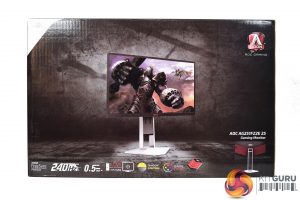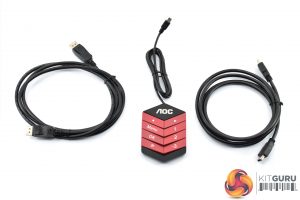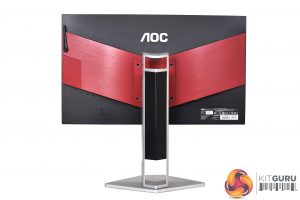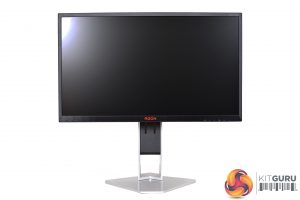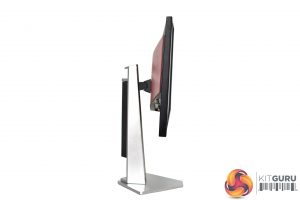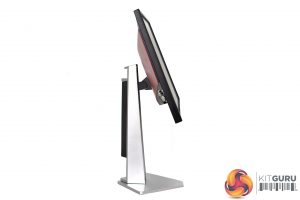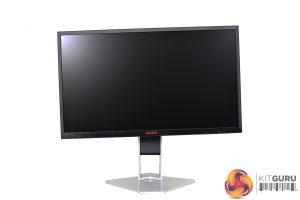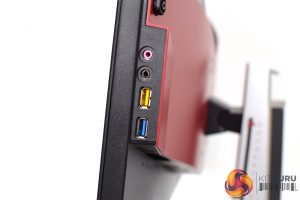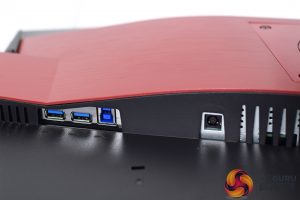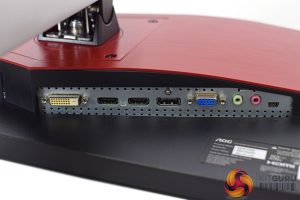The AOC AG251FZ2E ships in a fairly typical monitor box, with an image of the display visible on the front, with a number of key features highlighted at the bottom.
The accessory bundle includes both UK and EU power leads, the external power brick, one HDMI cable, one DisplayPort cable and an external controller used to navigate the OSD.
As for the monitor itself, this may well look familiar as it uses AOC's signature design styling, meaning it is mostly black but with some obvious red accents, particularly that large section on the back.
There are a couple of things to note, though. First of all, there's no bezel-free design here – instead, AOC has opted for a traditional bezel on all four sides of the screen. The bezel on the top and sides measures approximately 9mm, while the bottom bezel is thicker at approximately 21mm. Personally, this does look a touch dated to my eye, as almost all modern monitors are going for that bezel-free approach, though this is of course a matter of personal preference.
The other thing to note is the metal stand. AOC is keen to stress the ‘flat base' design that has been deployed here, which should allow for increased room for your mouse movements when compared to a typical v-shaped base.
There's a whole range of ergonomic adjustments to be had from the stand, too. It can swivel 20 degrees left and right, adjust its height by up to 130mm, and tilt from -3.5° ±1° to 21.5° ±1.5°. You can also rotate the display so it sits vertically.
The left-hand edge of the screen is home to two USB 3.0 ports, one of which supports fast charge, as well as the 3.5mm headset output and mic jacks.
Just above this section we find a small headset holder arm, something we have come to expect from an AOC monitor.
Meanwhile, on the back of the screen we have the rest of the ports, split into two banks. The left-hand side holds the USB upstream connector and two more USB downstream ports, as well as the power input. On the right hand side, we have a DVI port, two HDMI 2.0 ports, one DisplayPort 1.2, one VGA connector (very old school!) as well and the other two line in/mic jacks. The final port is a USB Mini B connector, used for that external OSD controller we mentioned above.
Alternatively, if you'd rather use a more traditional method of navigating the OSD, five small buttons are positioned on the bottom right edge of the bezel, with their corresponding icons visible from the front.
 KitGuru KitGuru.net – Tech News | Hardware News | Hardware Reviews | IOS | Mobile | Gaming | Graphics Cards
KitGuru KitGuru.net – Tech News | Hardware News | Hardware Reviews | IOS | Mobile | Gaming | Graphics Cards


